The victory opened a new glorious period in the history of Thang Long-Dong Do-Hanoi.
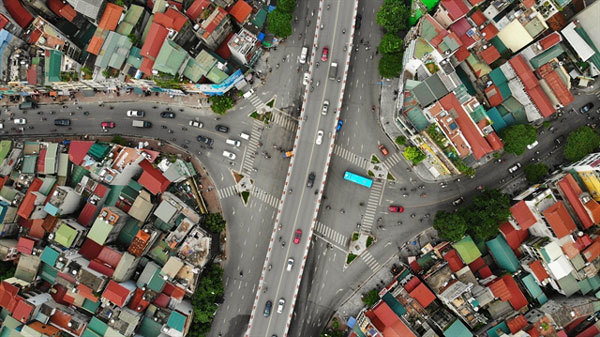 |
| A street performance in downtown Hanoi at the weekend. VNA/VNS Photo Thanh Tung |
From a war-torn city, Hanoi has undergone major changes over the past 66 years, becoming a modern and dynamic city and the biggest political, socio-economic and cultural centre of Vietnam, making contributions to the nation’s development while still preserving traditional historical and cultural identities.
One of the city’s biggest changes was the appearance of new skyscrapers, urban areas and construction of new transport projects, especially since Đổi mới (reform) in 1986 and administrative boundary expansions in 2008.
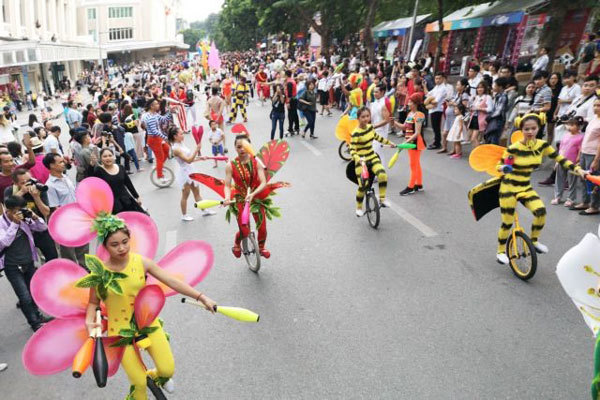 |
| A street performance in downtown Hanoi at the weekend. VNA/VNS Photo Thanh Tung |
A number of skyscrapers were built in every corner of the capital, like Keangnam Hanoi and Lotte Centre. Open and green space is the highlight in the urban design of the city.
Assessing the process of urban development in Hanoi, director of the Department of Construction Vo Nguyen Phong said a series of projects had been approved to boost investment and improve the city.
Key infrastructure projects have been put into use as part of the city’s transport plan. Those include bridges like Thanh Tri, Nhat Tan and Vinh Tuy, as well as bridges to be opened like Tu Lien and Tran Hung Dao, or many large roads which help improve traffic capacity.
New roads and flyovers were inaugurated to reduce traffic congestion, such as the expansion of Belt Road No 3 connecting Mai Dich Area and Thang Long Bridge, O Dong Mac-Nguyen Khoai Flyover, Dai Co Viet-Tran Khat Chan Flyover and An Duong-Thanh Nien Road Flyover.
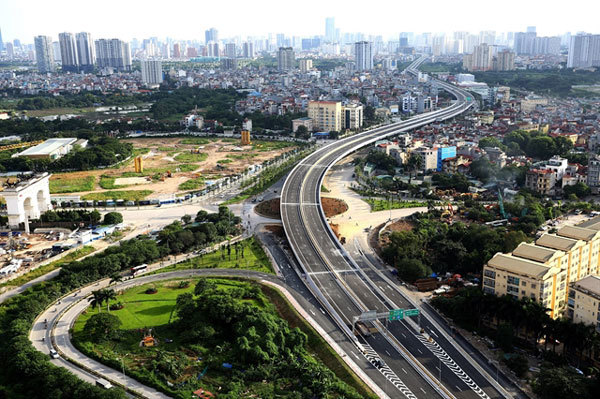 |
| Mai Dich-Nam Thang Long Overpass located in Cau Giay and Tay Ho districts will be open to traffic on October 10, 2020 to mark the 1010th anniversary of Thang Long-Hanoi and the city's 66th anniversary of liberation day. — VNA/VNS Photo Huy Hung |
The inauguration of Nhat Tan Bridge, the country's largest cable-stayed bridge, the 12.1-km Vo Nguyen Giap Avenue and the international terminal of Noi Bai Airport in January 2015 facilitated travel within the capital.
Vu Van Vien, director of the city’s Department of Transport, said those transport projects helped reduce traffic jams and increased the land fund allocated for transport. The land fund for the city’s transport projects increased from 8.65 per cent in 2015 to 9.75 per cent in 2019.
By the end of this year, 148 out of 214 transport projects in the 2016-20 plan are expected to be completed. Once those projects are put into use, the city will have more 498km of roads, he said.
In the future, the city will complete the construction of belt roads and urban railways, he added.
Prime Minister Nguyen Xuan Phuc in May this year approved the establishment of Hoa Lac urban satellite area which will be a centre of high-quality human resource training, national high-tech scientific research as well as a centre for national universities, colleges and medical facilities. This will also be an eco-resort, science-technology city as well as a green, smart, energy-saving urban area in the west of Hanoi.
The target of covering the city with green space has been completed with one million trees planted on the streets, said director of the Department of Construction Vo Nguyen Phong.
100 per cent of urban households have access to clean water. All waste in urban areas, 90 per cent of waste in rural areas and 100 per cent of medical waste have been collected and treated following standards, Phong said regarding the goals of improving the lives of local residents.
International co-operation
The growth of the capital city has been demonstrated not only through infrastructure development but also the capital’s deep international integration.
Chairman of the Vietnam Chamber of Commerce and Industry (VCCI) Vu Tien Loc said Hamoi was on the front line of welcoming a new investment wave and reorienting the global supply chain strategy towards higher added value.
In the first nine months of 2020, Hanoi attracted about US$3.28 billion of foreign investment, a remarkable result in the context of global investment decline due to COVID-19.
So far, the city has 6,278 foreign-invested projects, with capital of more than $47.7 billion and disbursement of more than $28.5 billion.
In the 2016-20 period, the city attracted $25 billion of foreign investment, becoming a bright spot on a national scale.
In two years of 2018 and 2019, Hanoi led the country in terms of foreign investment attraction.
Local authorities have made efforts to improve the investment and business climate, shown through the city’s high ranking.
Hanoi gained ninth position out of 63 localities in terms of 2018 and 2019’s Provincial Competitiveness Index and maintained the second ranking in three years 2017, 2018 and 2019 for the Public Administration Reform Index.
Chief Representative of Japan External Trade Organisation (Jetro) Hanoi Takeo Nakajima said about 41 per cent of Japanese companies were considering expanding their activities in Vietnam in the next three years. This was useful information for the city to take advantage of its position in the top ten Provincial Competitiveness Index category in order to increase foreign investment.
According to the Department of Planning and Investment of Hanoi, the city aims for $30-$40 billion of foreign investment capital in the 2021-25 period with disbursement of $20-$30 billion.
Hanoi has formed relations with more than 100 capitals and cities around the world. The capital's people-to-people external relations activities in the past five years have contributed to strengthening exchanges and promoting understanding between the people of Hanoi and people in many cities and countries around the world.
In 1999, Hanoi was among five cities on five continents presented with the “City for Peace” award by UNESCO to recognise its contributions to the struggle for peace as well as its development that met the organisation’s standards of equality in the community, urban construction, living environment, culture and education promotion, and care for younger generations.
Twenty years later in 2019, Hanoi became an official member of UNESCO’s Creative Cities Network.
Chief Representative of UNESCO in Vietnam Michael Croft said during its development, Hanoi had paid special attention to respecting the values of cultural heritage. By including Hanoi in the Creative Cities Network, UNESCO in Vietnam hopes to promote these values.
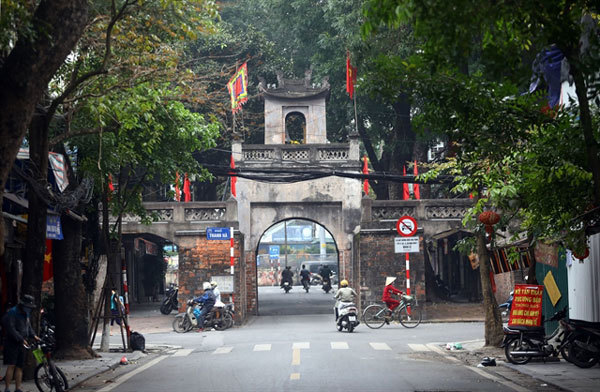 |
| O Quan Chuong - the former eastern entrance to the citadel - is preserved. —VNA/VNS Photo Danh Lam |
“UNESCO wants Hanoi to move from a creative city to a creative centre, then to the creative capital of Southeast Asia and Asia, on the basis of heritage, culture and peace, becoming a dynamic and creative city, pleasant to live in the 21st century,” he said.
According to Vuong Dinh Hue, Secretary of the municipal Party Committee, the city aims to become a green, smart and modern city by 2030 and a city worth living in by 2045.
“The city has promoted the initiative network with the aim of gathering local experts, scientists and Hanoi lovers to contribute their ideas to build and develop the capital into a hub for creativity and a city worth living in,” he said. VNS
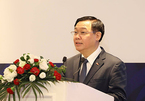
Hanoi Secretary: ‘creative city’ will become reality
Will Vietnam have a ‘Miracle on the Red River’ like South Korea's ‘Miracle on the Han River’?
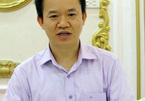
'Creative city' title - a boon for Hanoi: expert
Hanoi was recently named one of 66 new members of the United Nations Educational, Scientific and Cultural Organisation (UNESCO)’s Network of Creative Cities.